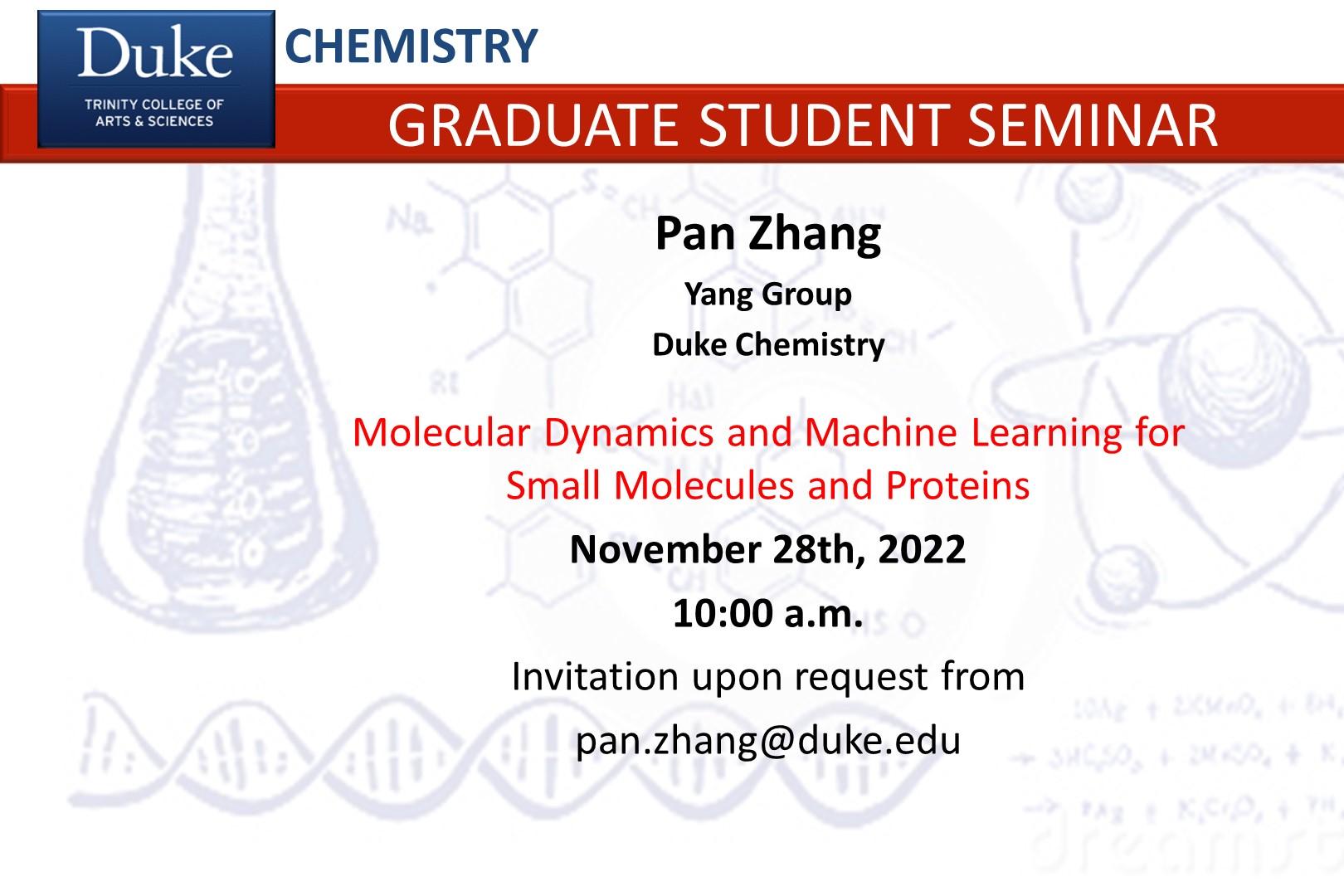Molecular Dynamics and Machine Learning for Small Molecules and Proteins

Weitao Yang, Ph.D.-Advisor
Abstract: Molecular dynamics (MD) simulation is a widely used approach to study small molecules and proteins. Quantum mechanical (QM) calculation has excellent accuracy, but the computational cost is high. Therefore, molecular mechanical (MM) force fields or QM/MM method are generally used in MD simulations. Machine learning (ML) provides capability for generating potential at QM accuracy with low computational cost. Here we apply MD and ML to develop new methods for simulations on small molecules and proteins. First, we train ML models to increase the accuracy of QM/MM. Active learning is performed to efficiently update ML models on the fly with gradient boosting, and new data are detected according to the boundary of reference energies, distance-based clustering, and density-based clustering. The solvation free energies of small molecules calculated from QM/MM ML models show good agreement with experiment. Next, force fields based on neural network (NN) are constructed for QM/MM vdW interaction. We develop QM-NN/MM-NN architecture and center of mass based fingerprint, which is suitable for non-bonded interaction. The NN force fields outperform Lennard-Jones potentials and show good transferability to different small molecules. In addition, universal NN force fields, CHARMM-NN, are constructed for proteins, according to residue-based systematic molecular fragmentation method. NN is based on atom types and MM based inputs are proposed. The validations on dipeptides show that the potential energy minima of CHARMM-NN are close to QM, but the simulations on peptides and proteins indicate that further improvement is needed. Finally, we develop a piecewise approach to run all-atom steered MD (SMD) simulations with small water box, which largely reduces simulation time. The piecewise all-atom SMD simulations on luciferase reveal more details and key secondary structures related to mechanostability in unfolding pathway.






